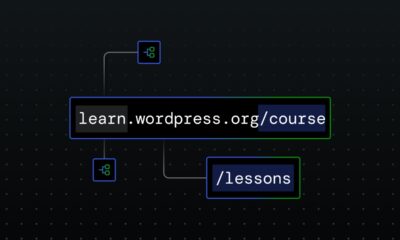PPC
The Ultimate How-to Guide on Google Ads A/B Testing


When it comes to online marketing, it’s difficult to know what will make for an engaging campaign. You’ll always find that some images, tones, and wordings appeal more to some people than others.
We all have our individual preferences. That’s why the success of a well-made campaign can often depend on it finding the right demographic. A/B testing, or split testing, can help you narrow down the preferences of your key demographics.
To give this guide some context, we’re going to talk about Google Ads A/B testing. You could apply these principles to any area of online marketing. However, 90% of organic search traffic on the web comes through Google, so it’s a good place to start.


What Is A/B Testing?
In marketing, this is a simple but versatile form of testing. It involves running two versions of the same campaign simultaneously and analyzing the results. Your “A” and “B” versions are demoed to different groups of the same audience.
As audience responses come in, you analyze the response to each version of the campaign. If it’s a Google Ad, then this could be how much traffic clicks through to your landing page, for example.
When the campaign is over, look at which version drove the most traffic to your site. Then, take note of the differences compared to the successful campaign and use these to refine your marketing material.
With Google Ads, you can run these kinds of tests natively through the Google Ads tool. You might be looking for the highest click-through rates to judge success. You might be looking at which campaigns lead to the most conversions or the highest lifetime order value.
When you test in this way, “A” will often represent your current content, while “B” will be any changes you want to make. Whatever way you want to judge the success of A or B, Google Ads can provide the analytics you need.
Why Do I Need to Test My Marketing?
Marketing is not an exact science. Even the best marketing campaigns can be refined and tweaked to optimize them. Testing your marketing gives you solid data on to base your refinements on. This leads to much more efficient campaigns and ad placements.
There are other practical benefits to testing that are difficult to achieve without a test plan in place. Some of these are specific to Google Ads, but some are true even if you’re using in-house tools for web services testing.
Budget Control
As your financial department will be keen to tell you, budget control is vital to successful marketing. The key to a successful campaign is your return on investment (ROI).
Think of it this way. A big flashy ad campaign might bring in a lot of traffic. But if you spent more on the campaign than the extra revenue from that traffic, the campaign failed.
This is an extreme example. Testing will, mostly, help you make small incremental changes that optimize your ROI over time. It can help avoid big mistakes like the example above, too, though.
With Google Ads A/B testing, budget is very important as ad spend can directly affect impressions. When you run a split test, you need to make sure that each version of the campaign is still budgeted to receive enough impressions for a viable test.


AI Learning
Google Ads A/B testing helps the AI to learn your audience’s preferences. As you test more and more campaigns, you’ll gain a deeper analytic view of your audience segments. As well as the marketing they respond to best.
The way that Google’s machine learning works means that it can optimize to your audience. But, if you run a new campaign, it won’t necessarily make use of data from existing campaigns.
If you run a split test, the AI recognizes its link to the previous campaign and can use your existing marketing data.
Marketing Optimization
Google’s AI is quite advanced, but it still can’t work by itself, though. You need to remember that AI will optimize to the goals you set for a campaign. So if you’ve optimized for clicks and you’d rather concentrate on cost per acquisition, remember to switch your goals.
Once you’ve set your campaign up correctly, the machine learning portion of Google software will optimize toward what works. Whether you’re a multinational or selling on Amazon, you can use this to your advantage.


Using A/B Testing With Google Ads
Different kinds of marketing require different parameters for testing. If you’re testing keywords on a landing page, your tests will be very different from mobile compatibility testing for the same page.
Where to Start
Start by looking at what your campaign entails and deciding what its focus should be. This will tell you what kind of test you need. If you’re looking at the features of an ad, like its headline, wording, or images, then you need an Ad Variation Test.
Maybe you want to experiment with the dynamics of a campaign. Say, for example, you want to see how a campaign works with different core audiences. In that case, you would need to run a Campaign Experiment.
You can do both of these things from within Google Ads, so let’s look at Ad Variations first.
Setting up an Ads Page for A/B Testing
Here’s your step-by-step walkthrough for setting up an Ads page. If you haven’t set up a Google Ads account yet, do that first. Then follow these instructions.
- In your Google Ads account, you’ll need to go to the “All campaigns” tab.
- Start by selecting the campaign you want to run the test within.
- Note that if you want to run tests for multiple campaigns, you’ll need to set up each campaign individually.
- Once you’ve chosen the campaign, you’ll need to go to “Ads & Extensions.” You can find this on the left sidebar.
- Then click the Option for “Ads” when this appears.
- On this new page, you’ll see a + sign. Click this to create a new Ad.
- Select “Ad Variation” as the option here.
- Now, you should be on the Ad Variation page. Here, you’ll have to select the Campaign and Ad type, then hit continue.
- Now, we need to find the text we want to replace with our variation. Use the Find and Replace function to search your original headline, etc.
- Match it up with the correct part of the Ad using the right-hand sidebar’s “In” function.
- Here, you’ll see the “Replace With” section. Put your variation text here and continue.
- Name your test, and set the run time (Use an absolute minimum of two weeks.)
- To balance impressions of your original and variation equally, set the “Experiment split” to 50%.
- Don’t forget to hit “Create Variation” when you’re done. The page you see now will also show you your variations and the analytics for your A/B test. Use this to keep track of your key metrics.
This is how to set up an Ads page. There’s another function that can be used for A/B Testing in Google Ads, too.
Experiments: Everything You Need to Know
Drafts and experiments can be used both for Ad variations and campaign testing. The method for Ad variations is very similar to the steps above, so we’ll cover that first.
Experiments for Ad Variations
Setting up an Ad Variation in Experiments is just like setting up an Ads page. But instead of going to Ads and Extensions in All Campaigns, you’ll go to “+More” on the left sidebar. Then select “All Experiments.”
From here, you can add a new Ad Variation in the same way we described above. This is also where you can set up a new campaign experiment.
Experiments for Campaigns
Google Ads used to call these “drafts and experiments”. Now they’re known as “Custom Experiments.” Experiments for campaigns are used for:
- Bidding optimization
- Keyword optimization
- Landing-page A/B testing
- Demographic testing
- Audience segmentation
You can easily follow the steps above to create a new campaign experiment. The only real differences are that you’ll be setting parameters like Ad spend and audience segments.
Remember to always give your tests at least two weeks to run, ideally more for conclusive results.


Results: Analyze, Implement, Improve
The nice thing about using Google Ads A/B testing is that it will perform the analytics by itself. However, that doesn’t mean you can just leave it to its own devices. You’ll need to implement continual testing to learn what works and what doesn’t.
Don’t forget that in marketing, your failures can teach you as much as your successes. There are different types of reports in software testing, and it’s important to get to know what you should be looking for.
Conclusion
You wouldn’t neglect testing in research and development. So why would you neglect it in marketing? A/B testing should only be one part of your overall testing strategy. But it’s a small and integral part that often gets ignored. Follow this guide to avoid that mistake.
!function(f,b,e,v,n,t,s)
{if(f.fbq)return;n=f.fbq=function(){n.callMethod?
n.callMethod.apply(n,arguments):n.queue.push(arguments)};
if(!f._fbq)f._fbq=n;n.push=n;n.loaded=!0;n.version=’2.0′;
n.queue=[];t=b.createElement(e);t.async=!0;
t.src=v;s=b.getElementsByTagName(e)[0];
s.parentNode.insertBefore(t,s)}(window, document,’script’,
‘https://connect.facebook.net/en_US/fbevents.js’);
fbq(‘init’, ‘798354844174730’);
fbq(‘track’, ‘PageView’);
!function(f,b,e,v,n,t,s){if(f.fbq)return;n=f.fbq=function(){n.callMethod?
n.callMethod.apply(n,arguments):n.queue.push(arguments)};if(!f._fbq)f._fbq=n;
n.push=n;n.loaded=!0;n.version=’2.0′;n.queue=[];t=b.createElement(e);t.async=!0;
t.src=v;s=b.getElementsByTagName(e)[0];s.parentNode.insertBefore(t,s)}(window,
document,’script’,’https://connect.facebook.net/en_US/fbevents.js’);
Source link

















You must be logged in to post a comment Login